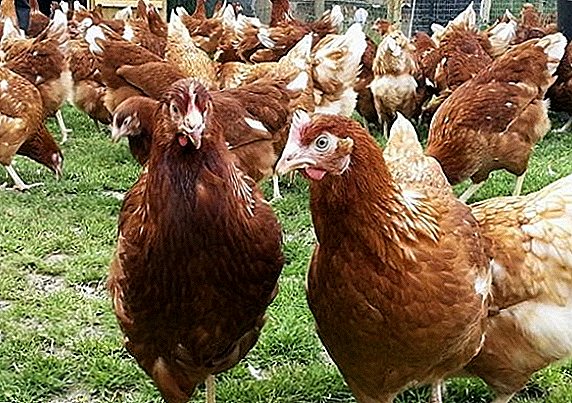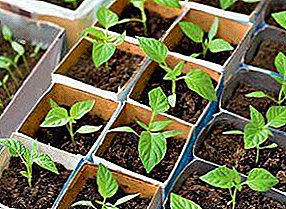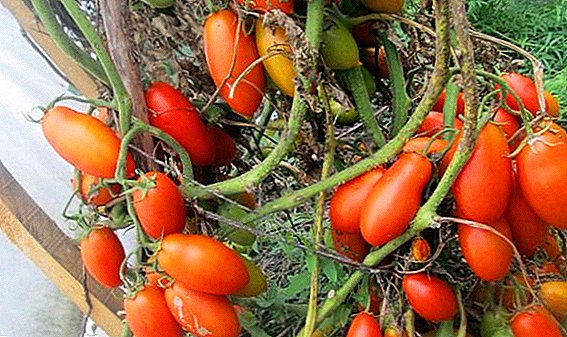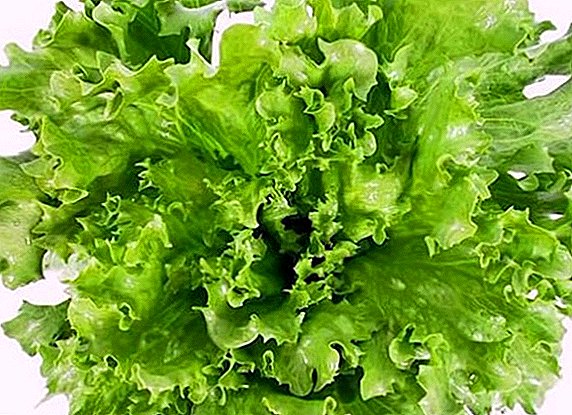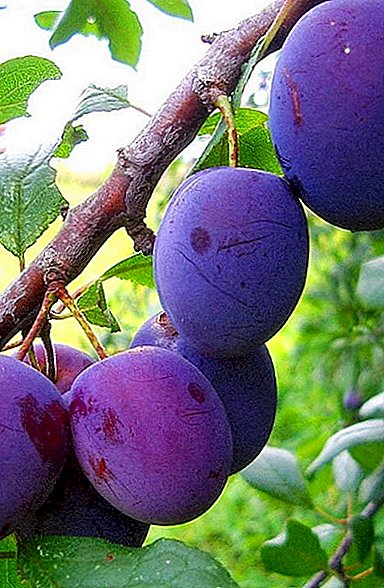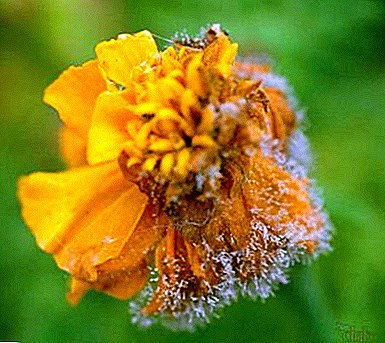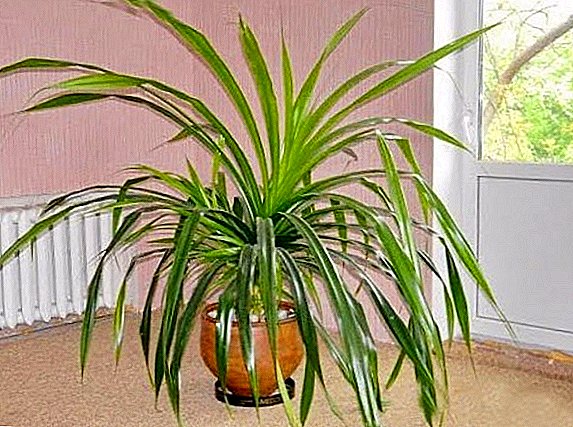 European flower growers Pandanus is known as the "helical palm", having received it thanks to the narrow long leaves growing in a spiral. But for residents of the Pacific Islands, this is a very common wild plant with beautiful large flowers and wonderful fruits. It is almost impossible to achieve flowering and fruiting in indoor conditions, so it remains to admire the luxurious evergreen cap of dense foliage: and the more attention you pay to a flower, the more elegant it will be. Let us figure out what conditions need to create pandanus and whether it is possible to keep it at home at all.
European flower growers Pandanus is known as the "helical palm", having received it thanks to the narrow long leaves growing in a spiral. But for residents of the Pacific Islands, this is a very common wild plant with beautiful large flowers and wonderful fruits. It is almost impossible to achieve flowering and fruiting in indoor conditions, so it remains to admire the luxurious evergreen cap of dense foliage: and the more attention you pay to a flower, the more elegant it will be. Let us figure out what conditions need to create pandanus and whether it is possible to keep it at home at all.
Common room views
In the wild, pandanuses, depending on species diversity, can develop in the form of a bush or tree. But in any case, these are very tall plants, often reaching a height of 15 meters, with numerous aerial roots that serve as supports for the stripped bottom. In the conditions of an apartment, even under the most favorable conditions and regular proper care, such a giant cannot be raised. The maximum flower height is possible at the level of two meters.


Did you know? The unusual orange flowers of pandanus, which resemble earrings in shape, are still used by Indian beauties as decorations. Unmarried girls interweave them in braids, believing in the magic quivering power of fragrant inflorescences. According to ancient beliefs, they help to get married successfully.Pot pandanuses are also distinguished by their overall size; therefore, they often plant large rooms with high ceilings. In the area of botany there are up to 600 species of this exotic culture. Of which for home cultivation only two fit: "Weichi" and "Sanderi". Both are distinguished by the compactness of the palm-shaped crown and ease of care.
The tree shrub of the Veiči pandanus is characterized by long green leaves (up to 1 m long and up to 8 cm wide). At their edges and in the middle of the inner side there are densely located small spines. Special variegated variegated variegated varieties of this species. They have on the leaves clearly visible yellow or white broad stripes. The height of a mature plant reaches one and a half meters.
Read also about the cultivation of other palm trees: date, Hamedorei, Hovei Belmor, Yucca, draceni.
The tree-like pandanus "Sanderi" is considered tall and large, which is characterized by a short trunk and green leaves up to 80 cm long and up to 5 cm wide. In the room, this screw palm grows up to 2 m. It also has variegated decorative varieties with beautiful light stripes.
Did you know? Pandanus lives about 30 years, but develops very slowly. Only fifteen-year-old plants acquire significant size.
Optimal conditions for growing
The helical palm is not demanding. She needs no more attention than other plants. Let us analyze in more detail the conditions under which the pandanus will be comfortable.
Location and lighting
Argued that pandanus has a very aggressive energyIt makes people angry in the room. It is noted that the caustic energy of the flower contributes to the formation of wit. Therefore, it is undesirable to put it in the bedrooms and dwellings of the sanguine persons, but in the classrooms, offices, work rooms and abodes of weak-willed weak-tempered people it will be very useful.
Because it does not allow dormancy, strengthens brain activity, activates performance. In addition, growers claim that the helical palm acts as a protector of the house, protecting it from unnecessary energy of others.

Screw palm loves light very muchbut not direct and burning sunshine, but gentle, scattered. And the lighting should be abundant year-round. In the offseason, direct ultraviolet light is more benign, therefore it is completely harmless, but in summer it can burn leaves. In the heat of the window it is advisable to pritenyat using blinds or tulle. In winter, when natural light is low, it is necessary to connect fluorescent lamps for 6-8 hours.
Important! From a scientific point of view, pandanus is completely harmless: it does not emit toxins, foliage does not cause allergies and poses no threat to people. Botanists assure that the plant, on the contrary, cleans the air of pathogenic microflora due to the essential oils that are found in its composition.
Temperature
Like all palm trees, pandanuses love heat. At home, during the summer season, the optimum temperature for cultivating a flower is from 20 to 25 ° C. In the heat permissible mark of the thermometer is at 30 ° С, but this is already the limit of the capabilities of a moisture-loving plant. Therefore, in such a temperature regime, it will be appropriate to water several times a day.
In winter, the helical palm tree will comfortably grow at + 18 ° С. The temperature may drop to 15 ° C, but in the cold there are very high risks to destroy the culture.

Peculiarities of home care
When caring at home, Pandanus needs to create a close-to-natural moisture regime for air and soil, as well as take care of nutrients in the pot, crown formation and plant disease prevention. Let's look at all these nuances in order.
Watering and moisture
The hard-to-touch pandanus leaves can be without water for a long time, so frequent spraying do not require. The root system of the flower is also able to survive a short-term drought. But to abuse these qualities of the helical palm is not worth it. After all, the better you take care of her, the faster it will grow.
Important! Spraying pandanus leaves is not recommended. Sprayed water, falling into the leafy sinuses, provokes the development of fungal diseases. Air humidification is carried out near the plant.With watering a lot of trouble will not be. In a moderately hot season, it is enough to moisten an earthy lump in a pot every 2-3 days. Focus on the state of the upper layer of the substrate and water it as it dries. Do not allow water to stagnate and do not use cold water to moisten: let it stand for several days and warm to 30 ° C.
In the cold season, the number of irrigations is reduced, bringing to 1 times for 14 days. Otherwise, pandanus can get sick from excess moisture.

Soil and fertilizing
For the preparation of soil mixture under pandanus special ingredients will not be needed. For these purposes, universal purchased substrates or equal parts of leafy ground, river sand and humus are quite suitable.
Enrich the soil in a pot with helical palm experts recommend every 2 weeksstarting in April and ending in August. The best option for this are mineral complex fertilizers, which are buried in moist soil.
Did you know? Pacific Islanders use the young foliage of pandanus for food.
Transplant rules
Screw palms up to the age of ten need a transplant every year. And large plants with a strongly expanded root system require this procedure once every 3 years. In the process of transplanting, it is important to act carefully so as not to hurt the hands with the spines on the foliage, because they can not only prick, but also cut the skin.
The transplanting of the flower is carried out in the spring in a large capacity of several centimeters. Its bottom is covered with a layer of drainage and substrate. From above they roll over from the previous pot an earthen ball and put it into a new one. Take care not to damage the rhizomes, as they are very fragile. Then the pot is filled to the top with earth, tamped with it, smoothing it evenly, and watering the plant.
Possible difficulties in growing
Improper farming practices often affect the external condition of the palm tree. Therefore, timely action and the prevention of common mistakes can save your palm from typical problems.
Important! Dry lower palm leaves are a natural process of its development. But if it scares you with its abundance, add nutrients to the soil and transplant the plant in the spring.Often inexperienced growers, fearing damage to the pandanus leaf plates, do not moisten the air in the room. As a result, the leaves at the ends begin to dry out and lose their decorative effect.
A similar picture can be observed even when the plant has fallen into a draft. You can save the situation by spraying water near the plant with a spray bottle. Experienced housewives are advised to place the pot in a tray with wet clay or forest moss as a preventive measure, and also never open windows and balcony doors near the flower.
This nuance is very important because lack of moisture is just as dangerous for a pandanus as its excess. With the stagnation of water in the pot favorable conditions for the development of root rot. Prevent the emergence of this problem can only be watered competent. In cases where the disease is already progressing, an urgent transplant will be needed with the removal of all damaged parts of the root.
Important! You can not cut the aerial roots of pandanus - they provide the plant with moisture and are an additional support for the much overgrown palm-shaped cap.

Pandanus, who lived in the garden in the summer, can be amazed by the shield. You can notice the parasites on the underside of the leaf along the central vein. If there are few insects, try collecting them by hand. Otherwise, insecticide spraying will be needed (Aktara, Bi-58, Confidor).
Learn about the reproduction features of violets, streptocarpus, orchids, zamiokulkas, dieffenbachia, cactus, cheflers, laurels.
Breeding methods
Pandanus has several breeding methods at home. Particularly popular with florists are the division of the bush and cuttings, while professionals experiment with seeds.
Dividing bush
Perhaps this is the easiest technique to get a new sprout. It is done during the transplantation of large specimens and consists in cutting off young layers that appear on the main trunk. For planting take only strong healthy shoots with powerful roots. For rooting, they are first placed in a container with water, and after increasing the root system, they are planted in a prepared substrate.
Cuttings
At home, less often practiced method of cutting. For its implementation, lateral shoots up to 20 cm long are cut from pandanus. They are kept in water until the roots appear, into which growth stimulant can be added, and then planted in the ground.
Some experts do without water germination, and vice versa, the sections are dried for several hours, after which they are deepened into a peat-sand mixture. For better rooting, it is advisable to cover the plant container with polyethylene. For two months, roots will appear on the cuttings.
Did you know? In the homeland of the pandanus, their leaves are used to make linen.
Seeds
This method is practiced extremely rarely, since the probability of germination is low, in addition, a lot of trouble. Moreover, in temperate climates it is very difficult to obtain high-quality seed material.

Landing is carried out in peat tablets, located in plastic cups. They are first watered until softened, then a few centimeters are dredged into the substrate with a finger and covered with a plastic bag on top or with an identical plastic container. After the emergence of shoots shelter clean and continue to germinate shoots until the expansion of a full outlet. Then transplant it into a separate pot.
Exotic pandanus looks very decorative and completely unpretentious in the care. He can without loss survive the lack of moisture and light, the influence of central heating in winter. In addition, the room is practically not affected by pests. The only drawback of this plant is the volume of the crown, which will need a lot of space, but this problem will not arise in the next decade.




